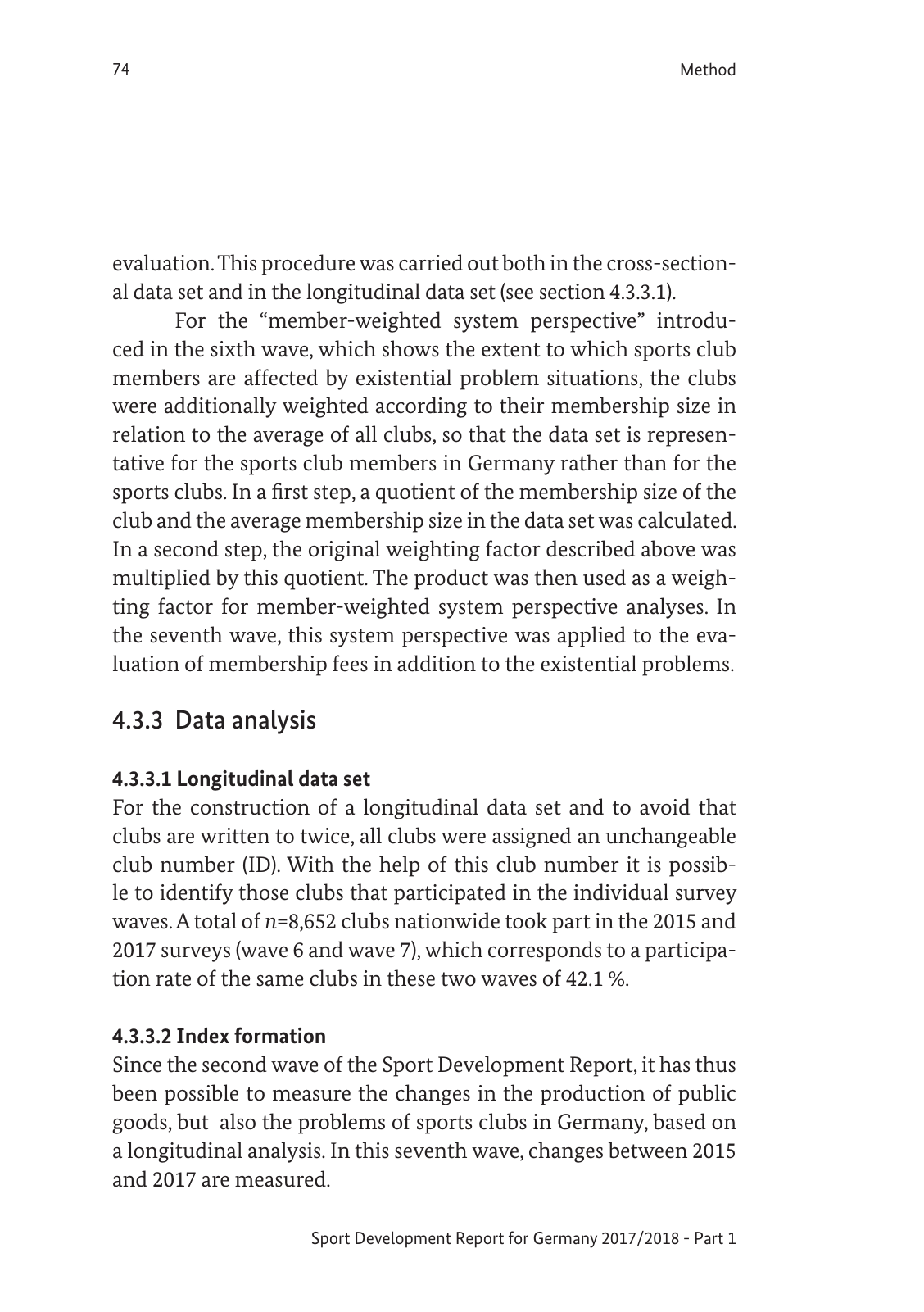74 Sport Development Report for Germany 2017 2018 Part 1 Method evaluation This procedure was carried out both in the cross section al data set and in the longitudinal data set see section 4 3 3 1 For the member weighted system perspective introdu ced in the sixth wave which shows the extent to which sports club members are affected by existential problem situations the clubs were additionally weighted according to their membership size in relation to the average of all clubs so that the data set is represen tative for the sports club members in Germany rather than for the sports clubs In a first step a quotient of the membership size of the club and the average membership size in the data set was calculated In a second step the original weighting factor described above was multiplied by this quotient The product was then used as a weigh ting factor for member weighted system perspective analyses In the seventh wave this system perspective was applied to the eva luation of membership fees in addition to the existential problems 4 3 3 Data analysis 4 3 3 1 Longitudinal data set For the construction of a longitudinal data set and to avoid that clubs are written to twice all clubs were assigned an unchangeable club number ID With the help of this club number it is possib le to identify those clubs that participated in the individual survey waves A total of n 8 652 clubs nationwide took part in the 2015 and 2017 surveys wave 6 and wave 7 which corresponds to a participa tion rate of the same clubs in these two waves of 42 1 4 3 3 2 Index formation Since the second wave of the Sport Development Report it has thus been possible to measure the changes in the production of public goods but also the problems of sports clubs in Germany based on a longitudinal analysis In this seventh wave changes between 2015 and 2017 are measured

Hinweis: Dies ist eine maschinenlesbare No-Flash Ansicht.
Klicken Sie hier um zur Online-Version zu gelangen.
Klicken Sie hier um zur Online-Version zu gelangen.